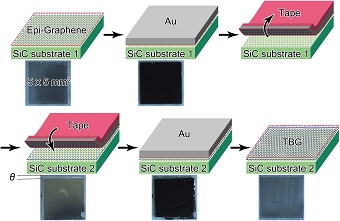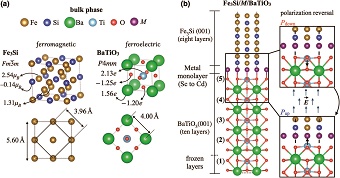66 巻, 1 号
特集「革新的材料-デバイスの創出を見据えた分野横断的表面科学研究」
選択された号の論文の18件中1~18を表示しています
- |<
- <
- 1
- >
- >|
巻頭言
-
原稿種別: 巻頭言
2023 年 66 巻 1 号 p. 1
発行日: 2023/01/10
公開日: 2023/01/10
PDF形式でダウンロード (360K)
特集「革新的材料-デバイスの創出を見据えた分野横断的表面科学研究」
-
原稿種別: 企画趣旨
2023 年 66 巻 1 号 p. 2-3
発行日: 2023/01/10
公開日: 2023/01/10
PDF形式でダウンロード (275K) -
原稿種別: 研究紹介
2023 年 66 巻 1 号 p. 4-9
発行日: 2023/01/10
公開日: 2023/01/10
PDF形式でダウンロード (4018K) -
原稿種別: 研究紹介
2023 年 66 巻 1 号 p. 10-15
発行日: 2023/01/10
公開日: 2023/01/10
PDF形式でダウンロード (7231K) -
原稿種別: 研究紹介
2023 年 66 巻 1 号 p. 16-21
発行日: 2023/01/10
公開日: 2023/01/10
PDF形式でダウンロード (8829K) -
原稿種別: 研究紹介
2023 年 66 巻 1 号 p. 22-27
発行日: 2023/01/10
公開日: 2023/01/10
PDF形式でダウンロード (7133K) -
 原稿種別: 研究紹介
原稿種別: 研究紹介
2023 年 66 巻 1 号 p. 28-33
発行日: 2023/01/10
公開日: 2023/01/10
-
原稿種別: 研究紹介
2023 年 66 巻 1 号 p. 34-39
発行日: 2023/01/10
公開日: 2023/01/10
PDF形式でダウンロード (1862K) -
原稿種別: 研究紹介
2023 年 66 巻 1 号 p. 40-45
発行日: 2023/01/10
公開日: 2023/01/10
PDF形式でダウンロード (3687K)
技術紹介
-
原稿種別: 技術紹介
2023 年 66 巻 1 号 p. 46-51
発行日: 2023/01/10
公開日: 2023/01/10
PDF形式でダウンロード (1399K) -
原稿種別: 技術紹介
2023 年 66 巻 1 号 p. 52-56
発行日: 2023/01/10
公開日: 2023/01/10
PDF形式でダウンロード (4524K)
談話室
海外研究体験記
-
原稿種別: 談話室
2023 年 66 巻 1 号 p. 57-58
発行日: 2023/01/10
公開日: 2023/01/10
PDF形式でダウンロード (2008K)
受賞者紹介
-
原稿種別: 談話室
2023 年 66 巻 1 号 p. 59
発行日: 2023/01/10
公開日: 2023/01/10
PDF形式でダウンロード (1162K) -
原稿種別: 談話室
2023 年 66 巻 1 号 p. 60
発行日: 2023/01/10
公開日: 2023/01/10
PDF形式でダウンロード (547K) -
原稿種別: 談話室
2023 年 66 巻 1 号 p. 61-62
発行日: 2023/01/10
公開日: 2023/01/10
PDF形式でダウンロード (1299K) -
原稿種別: 談話室
2023 年 66 巻 1 号 p. 63
発行日: 2023/01/10
公開日: 2023/01/10
PDF形式でダウンロード (227K)
ダイバーシティ通信
-
原稿種別: 談話室
2023 年 66 巻 1 号 p. 64-65
発行日: 2023/01/10
公開日: 2023/01/10
PDF形式でダウンロード (353K)
先端追跡
-
原稿種別: 先端追跡
2023 年 66 巻 1 号 p. 66
発行日: 2023/01/10
公開日: 2023/01/10
PDF形式でダウンロード (337K)
- |<
- <
- 1
- >
- >|









